Ford Puma vs VW Tiguan – Differences & prices compared
Compare performance, boot capacity, efficiency and price at a glance.
Find out which car is the better choice for you – Ford Puma or VW Tiguan?
Costs and Efficiency:
Looking at overall running costs, both models reveal some interesting differences in everyday economy.
Ford Puma has a clearly perceptible advantage in terms of price – it starts at 24800 £, while the VW Tiguan costs 32800 £. That’s a price difference of around 8014 £.
Fuel consumption also shows a difference: VW Tiguan manages with 0.40 L and is therefore decisively more efficient than the Ford Puma with 5.40 L. The difference is about 5 L per 100 km.
As for range, the Ford Puma performs decisively better – achieving up to 376 km, about 247 km more than the VW Tiguan.
Engine and Performance:
Power, torque and acceleration are the classic benchmarks for car enthusiasts – and here, some clear differences start to show.
When it comes to engine power, the VW Tiguan has a evident edge – offering 272 HP compared to 168 HP. That’s roughly 104 HP more horsepower.
In acceleration from 0 to 100 km/h, the VW Tiguan is evident quicker – completing the sprint in 5.90 s, while the Ford Puma takes 7.40 s. That’s about 1.50 s faster.
In terms of top speed, the VW Tiguan performs somewhat better – reaching 242 km/h, while the Ford Puma tops out at 210 km/h. The difference is around 32 km/h.
There’s also a difference in torque: VW Tiguan pulls noticeable stronger with 400 Nm compared to 290 Nm. That’s about 110 Nm difference.
Space and Everyday Use:
Whether family car or daily driver – which one offers more room, flexibility and comfort?
Both vehicles offer seating for 5 people.
In curb weight, Ford Puma is noticeable lighter – 1316 kg compared to 1599 kg. The difference is around 283 kg.
In terms of boot space, the VW Tiguan offers to a small extent more room – 652 L compared to 523 L. That’s a difference of about 129 L.
In maximum load capacity, the VW Tiguan performs evident better – up to 1650 L, which is about 367 L more than the Ford Puma.
When it comes to payload, VW Tiguan to a small extent takes the win – 533 kg compared to 469 kg. That’s a difference of about 64 kg.
Who wins the race?
The VW Tiguan proves to be wins the duel decisively and therefore becomes our DriveDuel Champion!
VW Tiguan is the better all-rounder in this comparison.
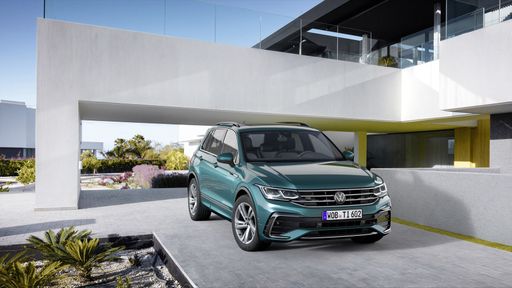
VW Tiguan
Ford Puma
The Ford Puma presents itself as a stylish compact SUV with a distinctive design that combines practicality with a dynamic driving experience. Its sleek lines and sporty aesthetics make it stand out on the road, while the interior offers a comfortable and tech-savvy environment. With an emphasis on efficiency and a smooth drive, the Ford Puma is well-suited for both urban commutes and countryside adventures.
details @ puma.fordpresskits.com
@ puma.fordpresskits.com
 @ puma.fordpresskits.com
@ puma.fordpresskits.com
 @ puma.fordpresskits.com
@ puma.fordpresskits.com
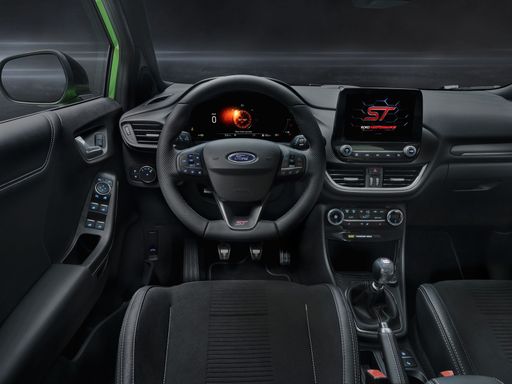 @ puma.fordpresskits.com
@ puma.fordpresskits.com
VW Tiguan
The VW Tiguan presents itself as a versatile and practical option in the SUV market, combining a stylish design with a spacious and comfortable interior. It offers a smooth driving experience, making it well-suited for both urban environments and longer journeys. With its focus on safety and innovative technology features, the Tiguan remains a compelling choice for families and adventurers alike.
details @ Volkswagen
@ Volkswagen
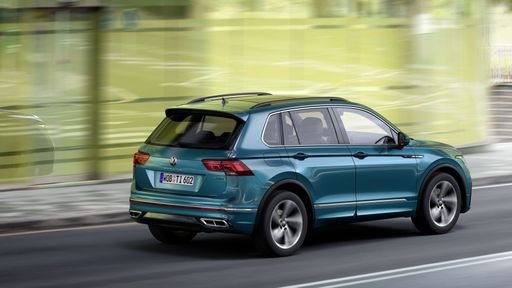 @ Volkswagen
@ Volkswagen
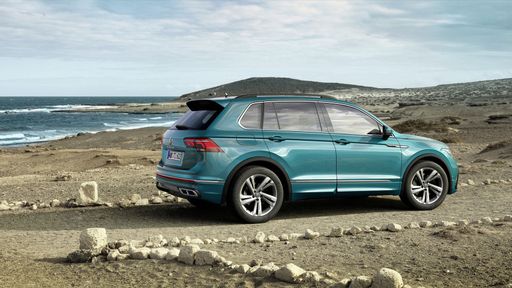 @ Volkswagen
@ Volkswagen
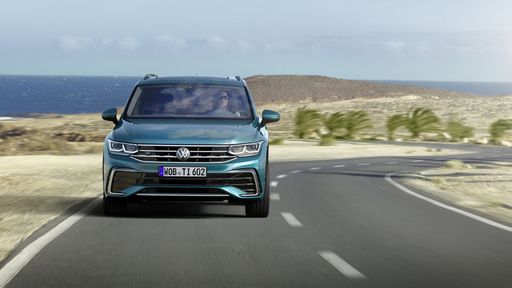 @ Volkswagen
@ Volkswagen
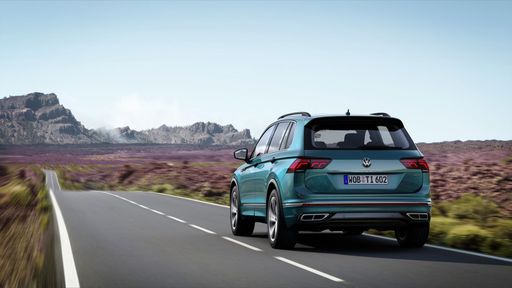 @ Volkswagen
@ Volkswagen
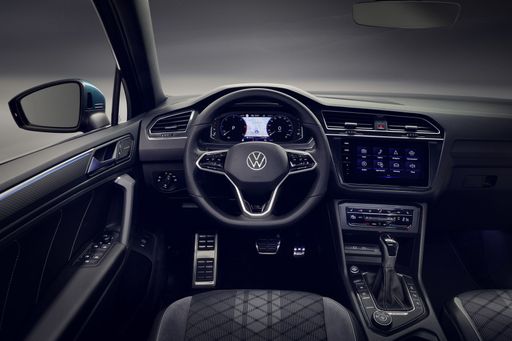 @ Volkswagen
@ Volkswagen

|

|
|
|
|
Costs and Consumption |
|
|---|---|
|
Price
24800 - 36300 £
|
Price
32800 - 51900 £
|
|
Consumption L/100km
5.4 - 5.9 L
|
Consumption L/100km
0.4 - 8.4 L
|
|
Consumption kWh/100km
13.1 - 13.9 kWh
|
Consumption kWh/100km
-
|
|
Electric Range
361 - 376 km
|
Electric Range
119 - 129 km
|
|
Battery Capacity
43 kWh
|
Battery Capacity
19.70 kWh
|
|
co2
0 - 135 g/km
|
co2
8 - 190 g/km
|
|
Fuel tank capacity
42 L
|
Fuel tank capacity
45 - 58 L
|
Dimensions and Body |
|
|---|---|
|
Body Type
SUV
|
Body Type
SUV
|
|
Seats
5
|
Seats
5
|
|
Doors
5
|
Doors
5
|
|
Curb weight
1316 - 1563 kg
|
Curb weight
1599 - 1890 kg
|
|
Trunk capacity
456 - 523 L
|
Trunk capacity
490 - 652 L
|
|
Length
4186 - 4226 mm
|
Length
4539 mm
|
|
Width
1805 mm
|
Width
1842 - 1859 mm
|
|
Height
1550 - 1555 mm
|
Height
1656 - 1658 mm
|
|
Max trunk capacity
1216 - 1283 L
|
Max trunk capacity
1486 - 1650 L
|
|
Payload
367 - 469 kg
|
Payload
460 - 533 kg
|
Engine and Performance |
|
|---|---|
|
Engine Type
Electric, Petrol MHEV
|
Engine Type
Plugin Hybrid, Petrol, Petrol MHEV, Diesel
|
|
Transmission
Automatic, Manuel
|
Transmission
Automatic
|
|
Transmission Detail
Reduction Gearbox, Manual Gearbox, Dual-Clutch Automatic
|
Transmission Detail
Dual-Clutch Automatic
|
|
Drive Type
Front-Wheel Drive
|
Drive Type
Front-Wheel Drive, All-Wheel Drive
|
|
Power HP
125 - 168 HP
|
Power HP
130 - 272 HP
|
|
Acceleration 0-100km/h
7.4 - 9.8 s
|
Acceleration 0-100km/h
5.9 - 10.6 s
|
|
Max Speed
160 - 210 km/h
|
Max Speed
198 - 242 km/h
|
|
Torque
170 - 290 Nm
|
Torque
220 - 400 Nm
|
|
Number of Cylinders
3
|
Number of Cylinders
4
|
|
Power kW
92 - 124 kW
|
Power kW
96 - 200 kW
|
|
Engine capacity
999 cm3
|
Engine capacity
1498 - 1984 cm3
|
General |
|
|---|---|
|
Model Year
2025
|
Model Year
2024 - 2025
|
|
CO2 Efficiency Class
A, D
|
CO2 Efficiency Class
B, G, D, E, F
|
|
Brand
Ford
|
Brand
VW
|
Is the Ford Puma offered with different drivetrains?
The Ford Puma is offered with Front-Wheel Drive.
The prices and data displayed are estimates based on German list prices and may vary by country. This information is not legally binding.
